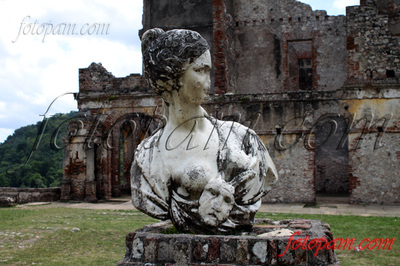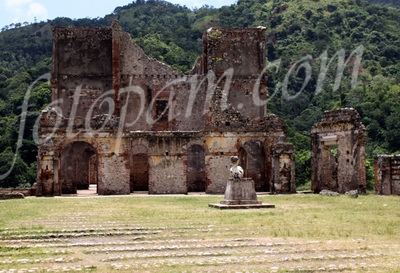Palais de Sans-Souci
Milot, Haiti
Le Palais Sans-Souci était la résidence royale du roi Henri Ier d'Haïti, la reine Marie-Louise et leurs enfants. Il était un ancien esclave qui est devenu un des principaux leaders durant la Révolution haïtienne de 1804. Sans-Souci a été achevée en 1813, au coût de centaines, voire des milliers de vie des ouvriers. Cet édifice une fois étonnant est maintenant une ruine, ayant été gravement endommagé par un tremblement de terre en 1842 et n'a jamais été reconstruit. Cent quarante ans plus tard, en 1982, l'UNESCO a désigné Sans Souci comme site du patrimoine mondial.
The Sans-Souci Palace, whose name means "without worry" was the royal residence of King Henri Christophe I of Haiti, and his family. He was a former slave who became a key leader in the 1804 Haitian Revolution. Sans-Souci was completed in 1813, at the cost of hundreds, maybe even thousands of labourers' lives. This once stunning edifice is now a ruin, having been severely damaged by an earthquake in 1842 and was never rebuilt. One hundred and forty years later, in 1982, UNESCO designated Sans-Souci as World Heritage Site.
The Sans-Souci Palace, whose name means "without worry" was the royal residence of King Henri Christophe I of Haiti, and his family. He was a former slave who became a key leader in the 1804 Haitian Revolution. Sans-Souci was completed in 1813, at the cost of hundreds, maybe even thousands of labourers' lives. This once stunning edifice is now a ruin, having been severely damaged by an earthquake in 1842 and was never rebuilt. One hundred and forty years later, in 1982, UNESCO designated Sans-Souci as World Heritage Site.









